Nature-Based Solutions and Climate Resilience: A Bibliographic Perspective through Science Mapping Analysis
Abstract
:1. Introduction
2. Methods of the Literature Search
3. Results of the Bibliographic Review and Science Mapping Analysis
3.1. Co-Occurrence Analysis
3.2. Research Trends
3.3. Research Gaps
3.4. Academic Journals in the NBS and Climate Resilience Fields
3.5. Authors and Pioneering Countries Researching within the NBS and Climate Resilience Fields
4. Discussion of the Review Findings and Conclusions
Author Contributions
Funding
Data Availability Statement
Conflicts of Interest
References
- World Bank. Analysis of Heat Waves and Urban Heat Island Effects in Central European Cities and Implications for Urban Planning; eLibrary, World Bank Group: Washington, DC, USA, 2020. [Google Scholar] [CrossRef]
- Harms, A. Under the climate radar: Disaster and displacement in the Bengal Delta. In Climate Justice and Migration: Mobility, Development, and Displacement in the Global South; Heinrich Böll Stiftung: Berlin, Germany, 2020; pp. 150–155. [Google Scholar]
- Clarke, B.; Otto, F.; Stuart-Smith, R.; Harrington, L. Extreme weather impacts of climate change: An attribution perspective. Environ. Res. Clim. 2022, 1, 012001. [Google Scholar] [CrossRef]
- Lehmann, S. Nature in the Urban Context: Renaturalisation as an Important Dimension of Urban Resilience and Planning. Modulo Arquit. CUC 2021, 26, 161–190. [Google Scholar] [CrossRef]
- Lehmann, S. Growing biodiverse urban futures: Renaturalization and rewilding as strategies to strengthen urban resilience. Sustainability 2021, 13, 2932. [Google Scholar] [CrossRef]
- Ozment, S.; Ellison, G.; Jongman, B. Nature-Based Solutions for Disaster Risk Management: Booklet; United Nations Office for Disaster Risk Reduction (UNDRR): Geneva, Switzerland; The World Bank: Washington, DC, USA, 2019. [Google Scholar]
- Ferreira, C.S.; Kalantari, Z.; Hartmann, T.; Pereira, P. Nature-Based Solutions for Flood Mitigation: Environmental and Socio-Economic Aspects; Springer Nature: Berlin, Germany, 2022. [Google Scholar]
- Scheiffer, R.G. Nature Based Solutions for Water Sensitive Communities: Governance Challenges and Opportunities in the Subsystem Vale do Lobo, Campina de Faro aquifer, Loulé, Portugal. Ph.D. Thesis, Universidade do Algarve, Faro, Portugal, 2023. [Google Scholar]
- Bosher, L.; Dainty, A. Disaster risk reduction and ‘built-in’resilience: Towards overarching principles for construction practice. Disasters 2011, 35, 1–18. [Google Scholar] [CrossRef] [PubMed]
- Faivre, N.; Fritz, M.; Freitas, T.; De Boissezon, B.; Vandewoestijne, S. Nature-Based Solutions in the EU: Innovating with nature to address social, economic, and environmental challenges. Environ. Res. 2017, 159, 509–518. [Google Scholar] [CrossRef] [PubMed]
- Wild, T.; Freitas, T.; Vandewoestijne, S. Nature-Based Solutions: State of the Art in EU-Funded Projects; Publications Office of the European Union: Luxembourg, 2020. [Google Scholar]
- Dorst, H.; Van der Jagt, A.; Raven, R.; Runhaar, H. Urban greening through nature-based solutions–Key characteristics of an emerging concept. Sustain. Cities Soc. 2019, 49, 101620. [Google Scholar] [CrossRef]
- Kabisch, N.; Frantzeskaki, N.; Pauleit, S.; Naumann, S.; Davis, M.; Artmann, M.; Haase, D.; Knapp, S.; Korn, H.; Stadler, J.; et al. Nature-based solutions to climate change mitigation and adaptation in urban areas: Perspectives on indicators, knowledge gaps, barriers, and opportunities for action. Ecol. Soc. 2016, 21, 39. [Google Scholar] [CrossRef]
- Frantzeskaki, N.; McPhearson, T.; Collier, M.J.; Kendal, D.; Bulkeley, H.; Dumitru, A.; Walsh, C.; Noble, K.; Van Wyk, E.; Ordonez, C.; et al. Nature-based solutions for urban climate change adaptation: Linking science, policy, and practice communities for evidence-based decision-making. BioScience 2019, 69, 455–466. [Google Scholar] [CrossRef]
- Dumitru, A.; Wendling, L. Evaluating the Impact of Nature-Based Solutions: A Handbook for Practitioners; European Commission EC: Brussels, Belgium, 2021. [Google Scholar]
- Sowińska-Świerkosz, B.; García, J. What are Nature-based solutions (NBS)? Setting core ideas for concept clarification. Nat.-Based Solut. 2022, 2, 100009. [Google Scholar] [CrossRef]
- Fletcher, T.D.; Shuster, W.; Hunt, W.F.; Ashley, R.; Butler, D.; Arthur, S.; Trowsdale, S.; Barraud, S.; Semadeni-Davies, A.; Bertrand-Krajewski, J.-L. SUDS, LID, BMPs, WSUD, and more–The evolution and application of terminology surrounding urban drainage. Urban Water J. 2015, 12, 525–542. [Google Scholar] [CrossRef]
- Coutts, C.; Hahn, M. Green infrastructure, ecosystem services, and human health. Int. J. Environ. Res. Public Health 2015, 12, 9768–9798. [Google Scholar] [CrossRef]
- Pacetti, T.; Castelli, G.; Bresci, E.; Caporali, E. Water values: Participatory water ecosystem services assessment in the Arno River basin, Italy. Water Resour. Manag. 2020, 34, 4527–4544. [Google Scholar] [CrossRef]
- Sarvari, H.; Rakhshanifar, M.; Tamošaitienė, J.; Chan, D.W.M.; Beer, M. A Risk Based Approach to Evaluating the Impacts of Zayanderood Drought on Sustainable Development Indicators of Riverside Urban in Isfahan-Iran. Sustainability 2019, 11, 6797. [Google Scholar] [CrossRef]
- Matthews, J.; Cruz, E.O.D. Integrating Nature-Based Solutions for Climate Change Adaptation and Disaster Risk Management: A Practitioner’s Guide; ADB Publications: Metro Manila, Philippines, 2022. [Google Scholar] [CrossRef]
- Donthu, N.; Kumar, S.; Mukherjee, D.; Pandey, N.; Lim, W.M. How to conduct a bibliometric analysis: An overview and guidelines. J. Bus. Res. 2021, 133, 285–296. [Google Scholar] [CrossRef]
- Entezari, A.; Aslani, A.; Zahedi, R.; Noorollahi, Y. Artificial intelligence and machine learning in energy systems: A bibliographic perspective. Energy Strategy Rev. 2023, 45, 101017. [Google Scholar] [CrossRef]
- Lievano Pulido, Y.P.; Ramon-Jeronimo, M.A. Green Marketing: A Bibliographic Perspective. Sustainability 2023, 15, 16674. [Google Scholar] [CrossRef]
- Daneshgar, S.; Zahedi, R.; Farahani, O. Evaluation of the concentration of suspended particles in subway stations in Tehran and its comparison with ambient concentrations. Ann. Environ. Sci. Toxicol. 2022, 6, 19–25. [Google Scholar] [CrossRef]
- Van Eck, N.; Waltman, L. Software survey: VOSviewer, a computer program for bibliometric mapping. Scientometrics 2010, 84, 523–538. [Google Scholar] [CrossRef] [PubMed]
- Scott, M.; Lennon, M.; Haase, D.; Kazmierczak, A.; Clabby, G.; Beatley, T. Nature-based solutions for the contemporary city/Re-naturing the city/Reflections on urban landscapes, ecosystems services and nature-based solutions in cities/Multifunctional green infrastructure and climate change adaptation: Brownfield greening as an adaptation strategy for vulnerable communities?/Delivering green infrastructure through planning: Insights from practice in Fingal, Ireland/Planning for biophilic cities: From theory to practice. Plan. Theory Pract. 2016, 17, 267–300. [Google Scholar] [CrossRef]
- Zwierzchowska, I.; Fagiewicz, K.; Poniży, L.; Lupa, P.; Mizgajski, A. Introducing nature-based solutions into urban policy–facts and gaps. Case study of Poznań. Land Use Policy 2019, 85, 161–175. [Google Scholar] [CrossRef]
- Chou, R.-J. Achieving successful river restoration in dense urban areas: Lessons from Taiwan. Sustainability 2016, 8, 1159. [Google Scholar] [CrossRef]
- Sabale, R.; Venkatesh, B.; Jose, M. Sustainable water resource management through conjunctive use of groundwater and surface water: A review. Innov. Infrastruct. Solut. 2023, 8, 17. [Google Scholar] [CrossRef]
- Yu, P.; Zhang, S.; Yung, E.H.K.; Chan, E.H.W.; Luan, B.; Chen, Y. On the urban compactness to ecosystem services in a rapidly urbanizing metropolitan area: Highlighting scale effects and spatial non–stationary. Environ. Impact Assess. Rev. 2023, 98, 106975. [Google Scholar] [CrossRef]
- Almenar, J.B.; Petucco, C.; Sonnemann, G.; Geneletti, D.; Elliot, M.; Rugani, B. Modeling the net environmental and economic impacts of urban nature-based solutions by combining ecosystem, em services, system dynamics, and life cycle thinking: An application to urban forests. Ecosyst. Serv. 2023, 60, 101506. [Google Scholar] [CrossRef]
- Alcalá-Herrera, R.; Moreno, B.; Aguirrebengoa, M.; Winter, S.; Robles-Cruz, A.B.; Ramos-Font, M.E.; Benítez, E. Role of Agricultural Management in the Provision of Ecosystem Services in Warm Climate Vineyards: Functional Prediction of Genes Involved in Nutrient Cycling and Carbon Sequestration. Plants 2023, 12, 527. [Google Scholar] [CrossRef] [PubMed]
- Kalinauskas, M.; Bogdzevič, K.; Gomes, E.; Inácio, M.; Barcelo, D.; Zhao, W.; Pereira, P. Mapping and assessment of recreational cultural ecosystem services supply and demand in Vilnius (Lithuania). Sci. Total Environ. 2023, 855, 158590. [Google Scholar] [CrossRef]
- Ding, T.; Fang, L.; Chen, J.; Ji, J.; Fang, Z. Exploring the relationship between water-energy-food nexus sustainability and multiple ecosystem services at the urban agglomeration scale. Sustain. Prod. Consum. 2023, 35, 184–200. [Google Scholar] [CrossRef]
- Pattanayak, S.; Arputham, R.M.; Goswami, M.; Rana, N.P. Blockchain Technology and Its Relationship with Supply Chain Resilience: A Dynamic Capability Perspective. IEEE Trans. Eng. Manag. 2023, 71, 10398–10412. [Google Scholar] [CrossRef]
- Wang, L.; Gong, W.; Wang, C.; Li, W. Spatial-temporal evolution and influencing factors of urban ecosystem resilience in the Yellow River Basin. Glob. NEST J. 2023, 25, 66–76. [Google Scholar] [CrossRef]
- Velasco, P.; Devanadera, M.C.; Dalisay, M.; Mueca, C.; Estorba, D.S.; Lecciones, A. Nature-based solutions for domestic wastewater treatment in the Philippines. In Regional Perspectives of Nature-Based Solutions for Water: Benefits and Challenges; Pachova, N., Velasco, P., Torrens, A., Jegatheesan, V., Eds.; Springer: Cham, Switzerland, 2023; pp. 175–201. [Google Scholar]
- Xu, Y.; Wang, Z.; Nairat, S.; Zhou, J.; He, Z. Artificial Intelligence-Assisted Prediction of Effluent Phosphorus in a Full-Scale Wastewater Treatment Plant with Missing Phosphorus Input and Removal Data. ACS EST Water 2023, 4, 880–889. [Google Scholar] [CrossRef]
- Mottahedi, S. Microgrid Energy Management System Control Using Reinforcement Learning. Ph.D. Dissertation, The Pennsylvania State University, State College, PA, USA, 2022. [Google Scholar]
- Saad, M.; Ahmad, M.B.; Asif, M.; Khan, M.K.; Mahmood, T.; Mahmood, M.T. Blockchain-Enabled VANET for Smart Solid Waste Management. IEEE Access 2023, 11, 5679–5700. [Google Scholar] [CrossRef]
- Ruíz Ordoñez, D.M.; Camacho De Angulo, Y.V.; Pencué Fierro, E.L.; Figueroa Casas, A. Mapping Ecosystem Services in an Andean Water Supply Basin. Sustainability 2023, 15, 1793. [Google Scholar] [CrossRef]
- Coşgun, A.; Günay, M.E.; Yıldırım, R. Exploring the critical factors of algal biomass and lipid production for renewable fuel production by machine learning. Renew. Energy 2021, 163, 1299–1317. [Google Scholar] [CrossRef]
- Maddison, A.L.; Camargo-Rodriguez, A.; Scott, I.M.; Jones, C.M.; Elias, D.M.; Hawkins, S.; Massey, A.; Clifton-Brown, J.; McNamara, N.P.; Donnison, I.S. Predicting future biomass yield in Miscanthus using the carbohydrate metabolic profile as a biomarker. GCB-Bioenergy 2017, 9, 1264–1278. [Google Scholar] [CrossRef] [PubMed]
- Schmidt, A.; Creason, W.; Law, B.E. Estimating regional effects of climate change and altered land use on biosphere carbon fluxes using distributed time-delay neural networks with Bayesian regularized learning. Neural Netw. 2018, 108, 97–113. [Google Scholar] [CrossRef] [PubMed]
- Rubin, E.S.; Mantripragada, H.; Marks, A.; Versteeg, P.; Kitchin, J. The outlook for improved carbon capture technology. Prog. Energy Combust. Sci. 2012, 38, 630–671. [Google Scholar] [CrossRef]
- Liu, Z.; Cui, Y.; Wang, J.; Yue, C.; Agbodjan, Y.S.; Yang, Y. Multi-objective optimization of multi-energy complementary integrated energy systems considering load prediction and renewable energy production uncertainties. Energy 2022, 254, 124399. [Google Scholar] [CrossRef]
- Wen, L.; Yuan, X. Forecasting CO2 emissions in China’s commercial department, through BP neural network based on random forest and PSO. Sci. Total Environ. 2020, 718, 137194. [Google Scholar] [CrossRef] [PubMed]
- Cesarini, G.; Crosti, R.; Secco, S.; Gallitelli, L.; Scalici, M. From city to sea: Spatiotemporal dynamics of floating macro litter in the Tiber River. Sci. Total Environ. 2023, 857, 159713. [Google Scholar] [CrossRef]
- Unguendoli, S.; Biolchi, L.G.; Aguzzi, M.; Pillai, U.P.A.; Alessandri, J.; Valentini, A. A modeling application of integrated nature-based solutions (NBS) for coastal erosion and flooding mitigation in the Emilia-Romagna coastline (Northeast Italy). Sci. Total Environ. 2023, 867, 161357. [Google Scholar] [CrossRef]
- Qi, B.; Xu, P.; Wu, C. Analysis of the Infiltration and Water Storage Performance of Recycled Brick Mix Aggregates in Sponge City Construction. Water 2023, 15, 363. [Google Scholar] [CrossRef]
- Xu, Z.; Mo, L.; Zhou, J.; Zhang, X. Optimal dispatching rules of hydropower reservoir in flood season considering flood resources utilization: A case study of Three Gorges Reservoir in China. J. Clean. Prod. 2023, 388, 135975. [Google Scholar] [CrossRef]
- Dhyani, S.; Karki, M.; Gupta, A.K. Opportunities and advances to mainstream nature-based solutions in disaster risk management and climate strategy. In Nature-Based Solutions for Resilient Ecosystems and Societies. Disaster Resilience and Green Growth; Dhyani, S., Gupta, M., Karki, A., Eds.; Springer: Singapore, 2020; pp. 1–26. [Google Scholar] [CrossRef]
- Bush, J. The role of local government greening policies in the transition towards nature-based cities. Environ. Innov. Soc. Transit. 2020, 35, 35–44. [Google Scholar] [CrossRef]
- Alves, A.; van Opstal, C.; Keijzer, N.; Sutton, N.; Chen, W.S. Planning the multifunctionality of nature-based solutions in urban spaces. Cities 2024, 146, 104751. [Google Scholar] [CrossRef]
- Hossain, M.K. Role of Information and Communication Technology (ICT) in Following Global Standard for NbS: The Bangladesh Perspective. In Regional Perspectives of Nature-Based Solutions for Water: Benefits and Challenges; Pachova, N., Velasco, P., Torrens, A., Jegatheesan, V., Eds.; Springer International Publishing: Cham, Switzerland, 2023; Chapter 9; pp. 225–247. [Google Scholar]
- Bhattarai, K.; Adhikari, A.P. Promoting Urban Farming for Creating Sustainable Cities in Nepal. Urban Sci. 2023, 7, 54. [Google Scholar] [CrossRef]
- Antwi-Agyakwa, K.T.; Afenyo, M.K.; Angnuureng, D.B. Know to Predict, Forecast to Warn: A Review of Flood Risk Prediction Tools. Water 2023, 15, 427. [Google Scholar] [CrossRef]
- Brigagão, G.V.; Araújo, O.D.Q.F.; de Medeiros, J.L.; Mikulcic, H.; Duic, N. A techno-economic analysis of thermochemical pathways for corncob-to-energy: Fast pyrolysis to bio-oil, gasification to methanol and combustion to electricity. Fuel Process. Technol. 2019, 193, 102–113. [Google Scholar] [CrossRef]

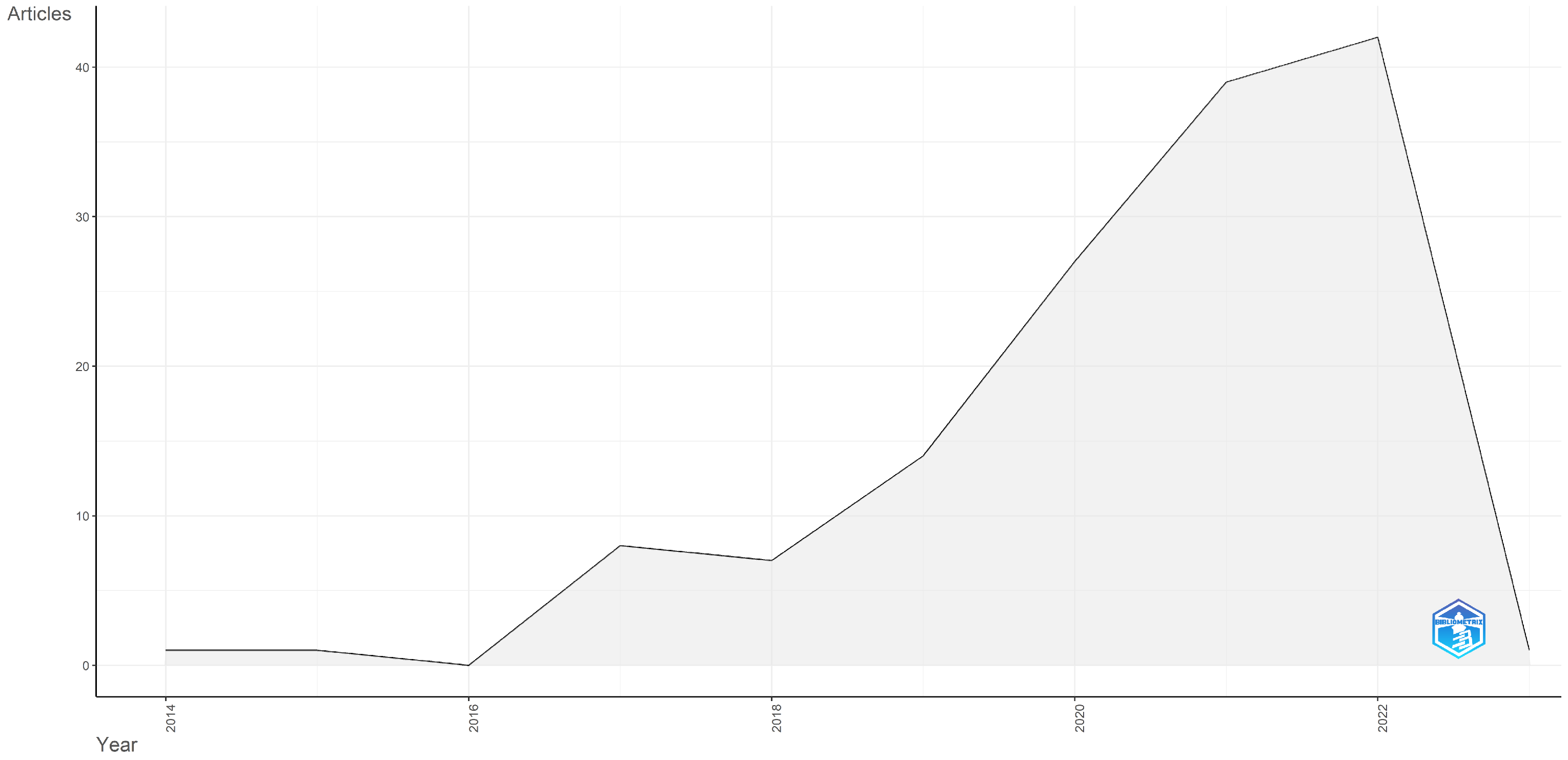


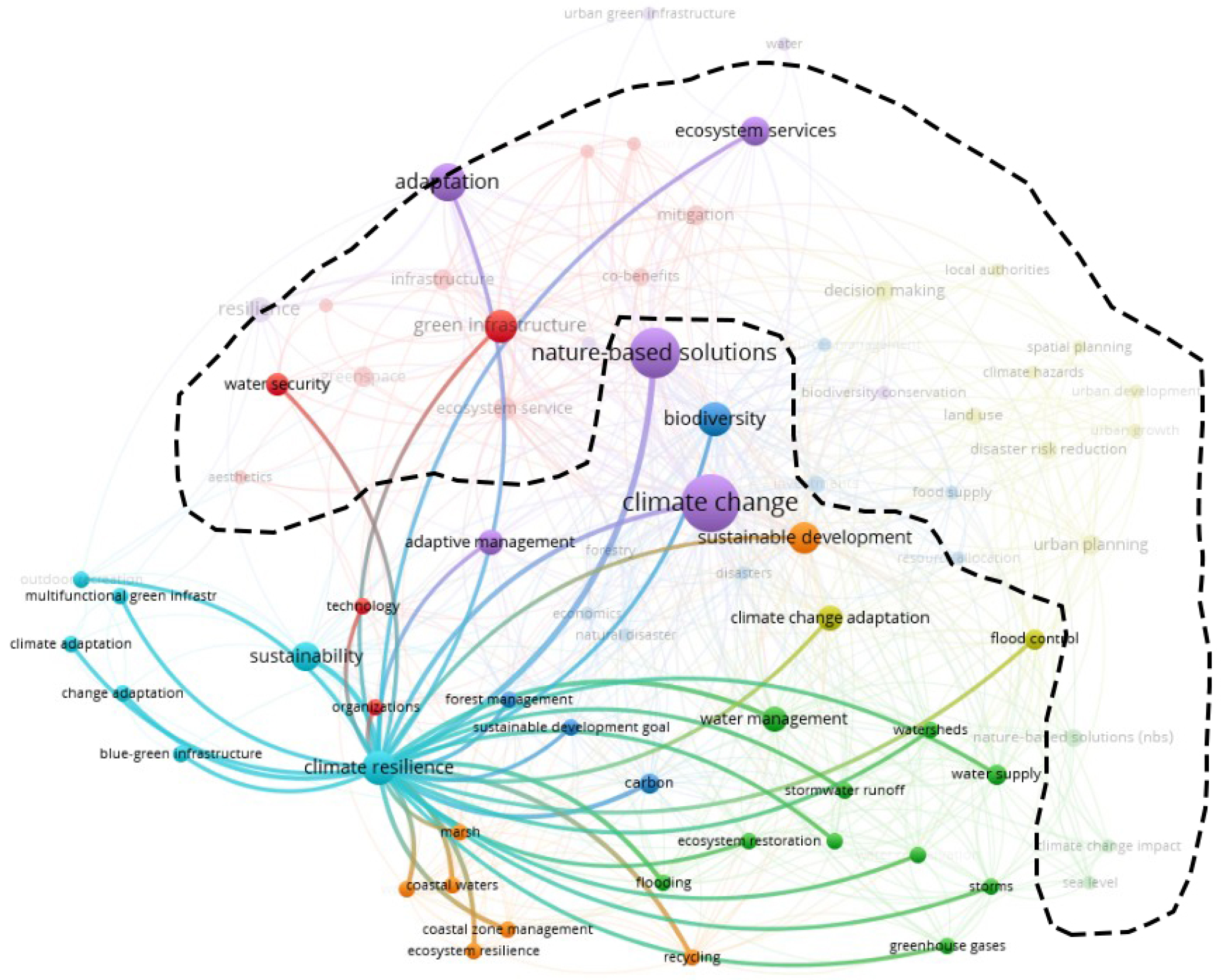

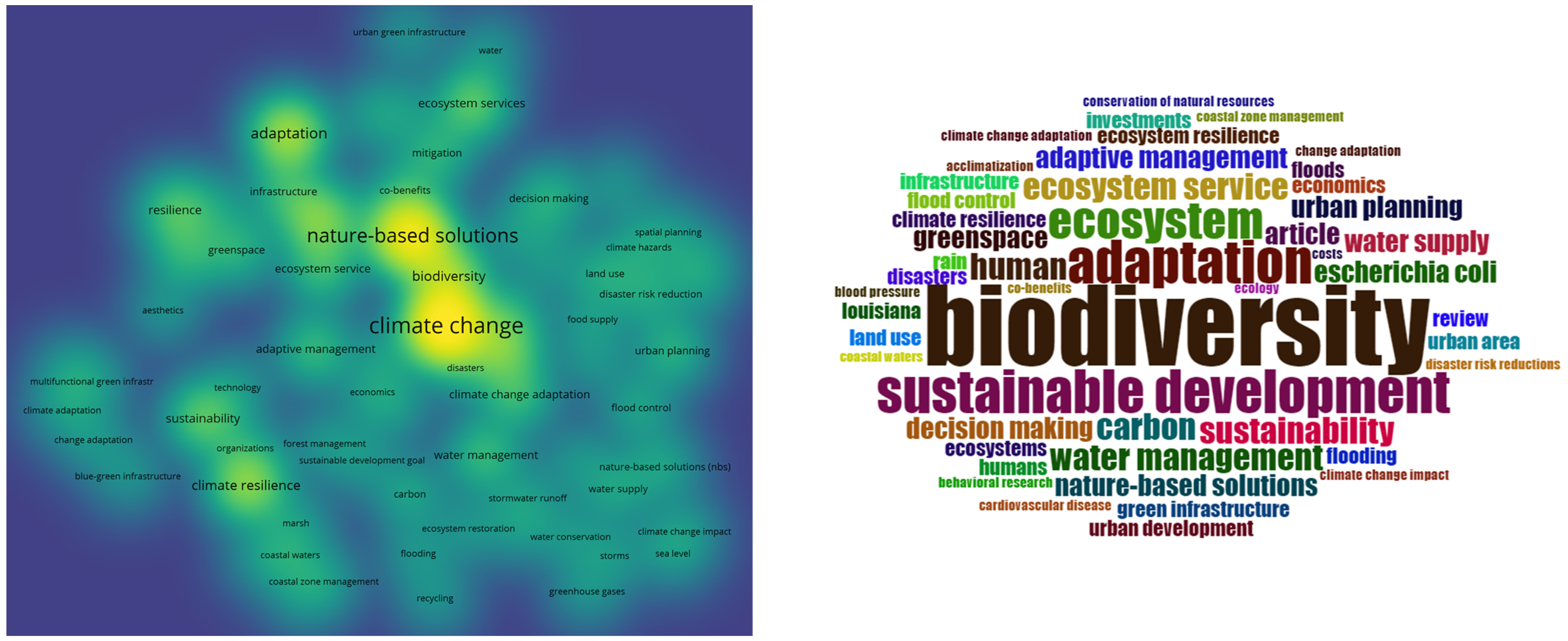
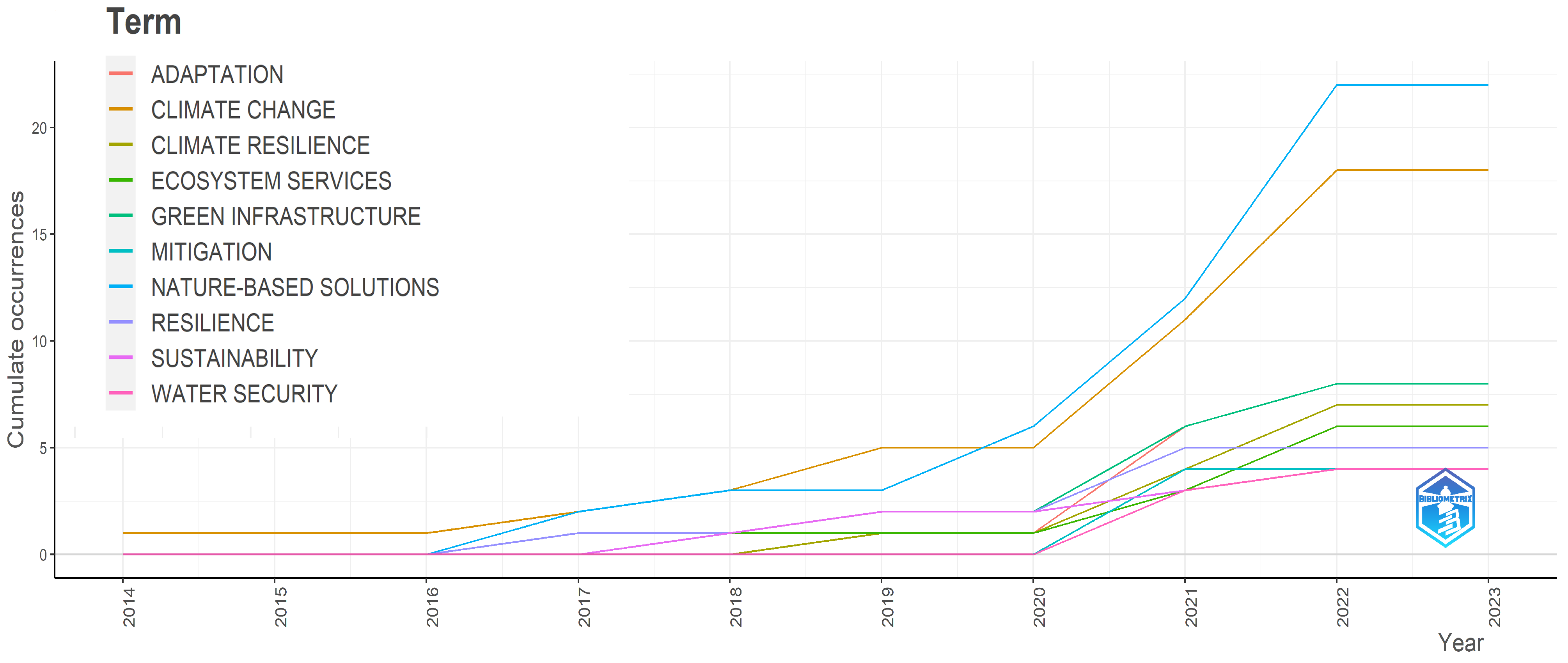

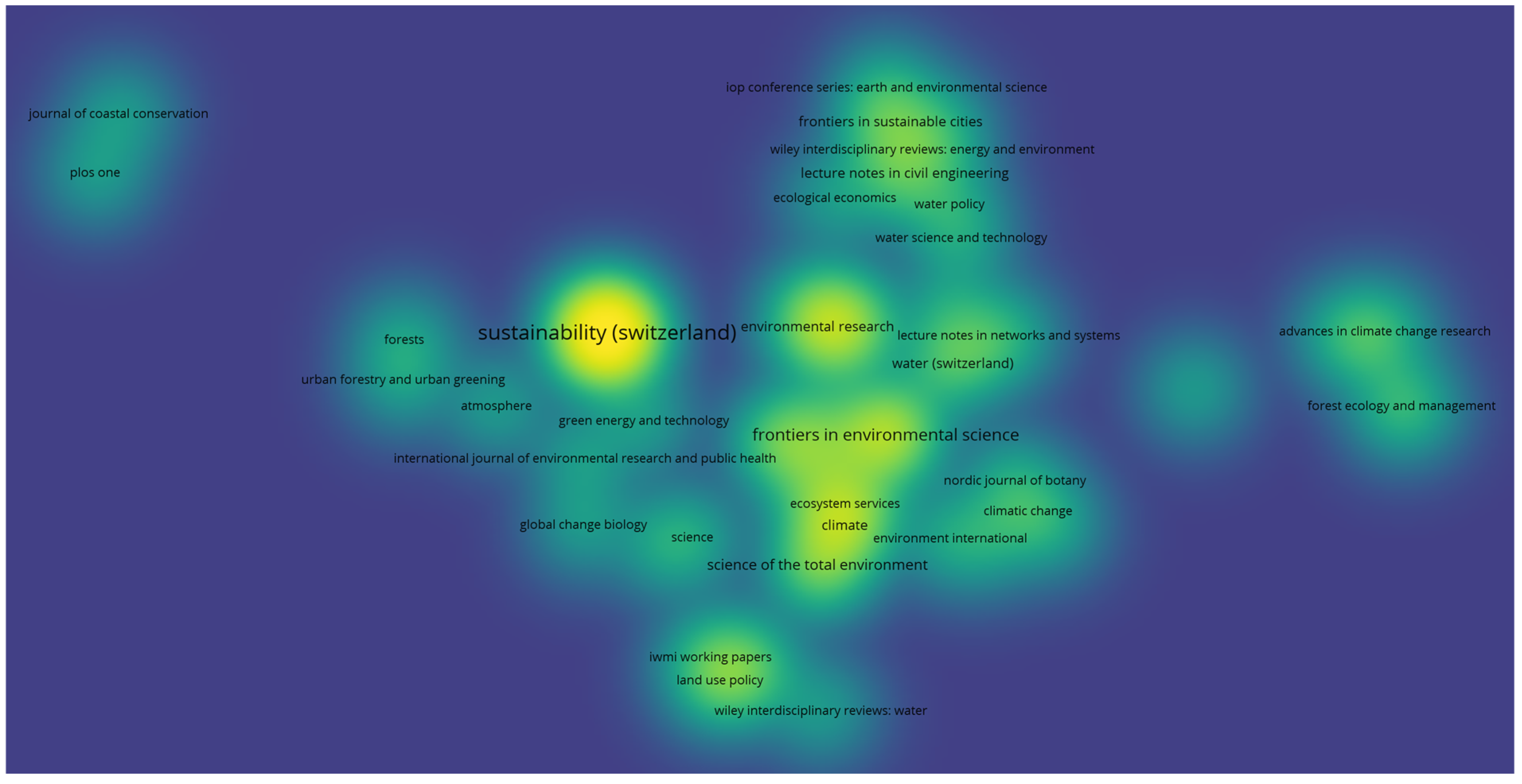
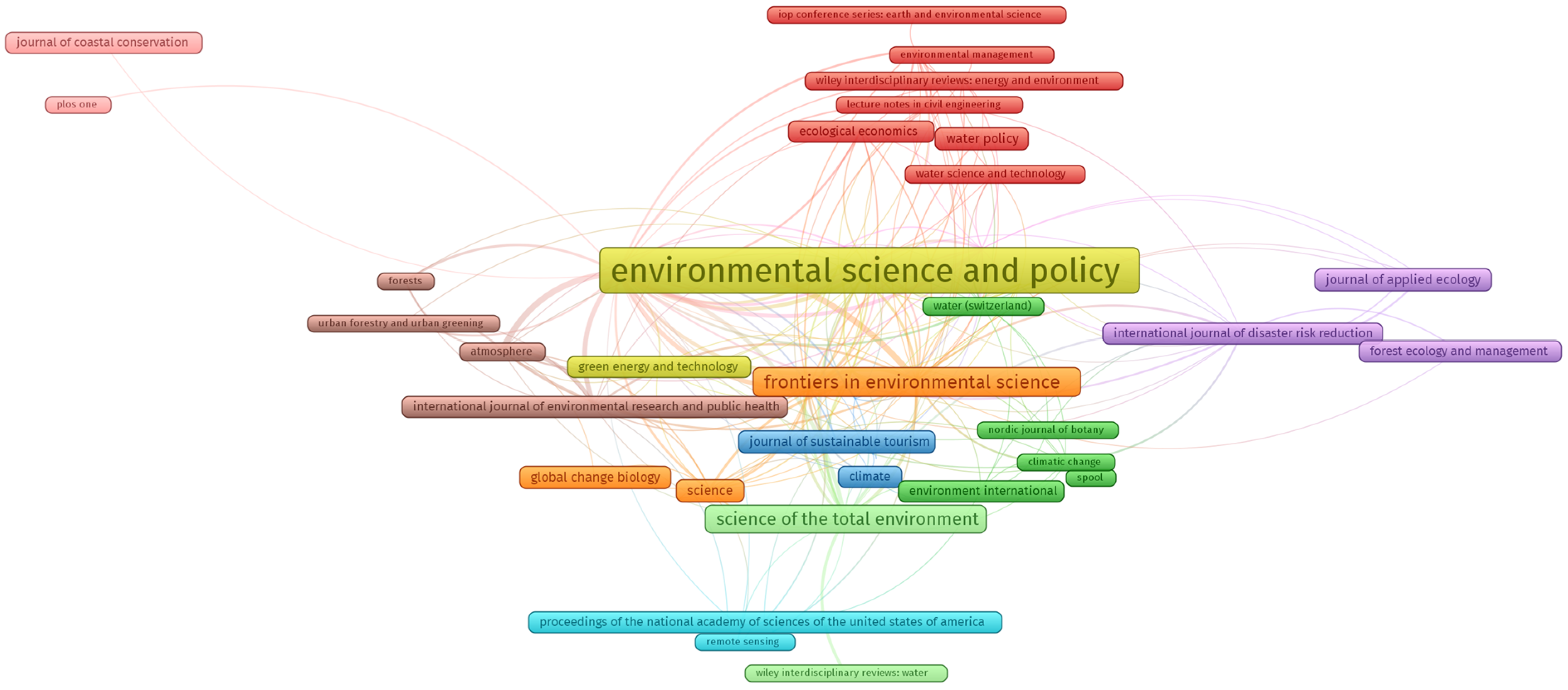
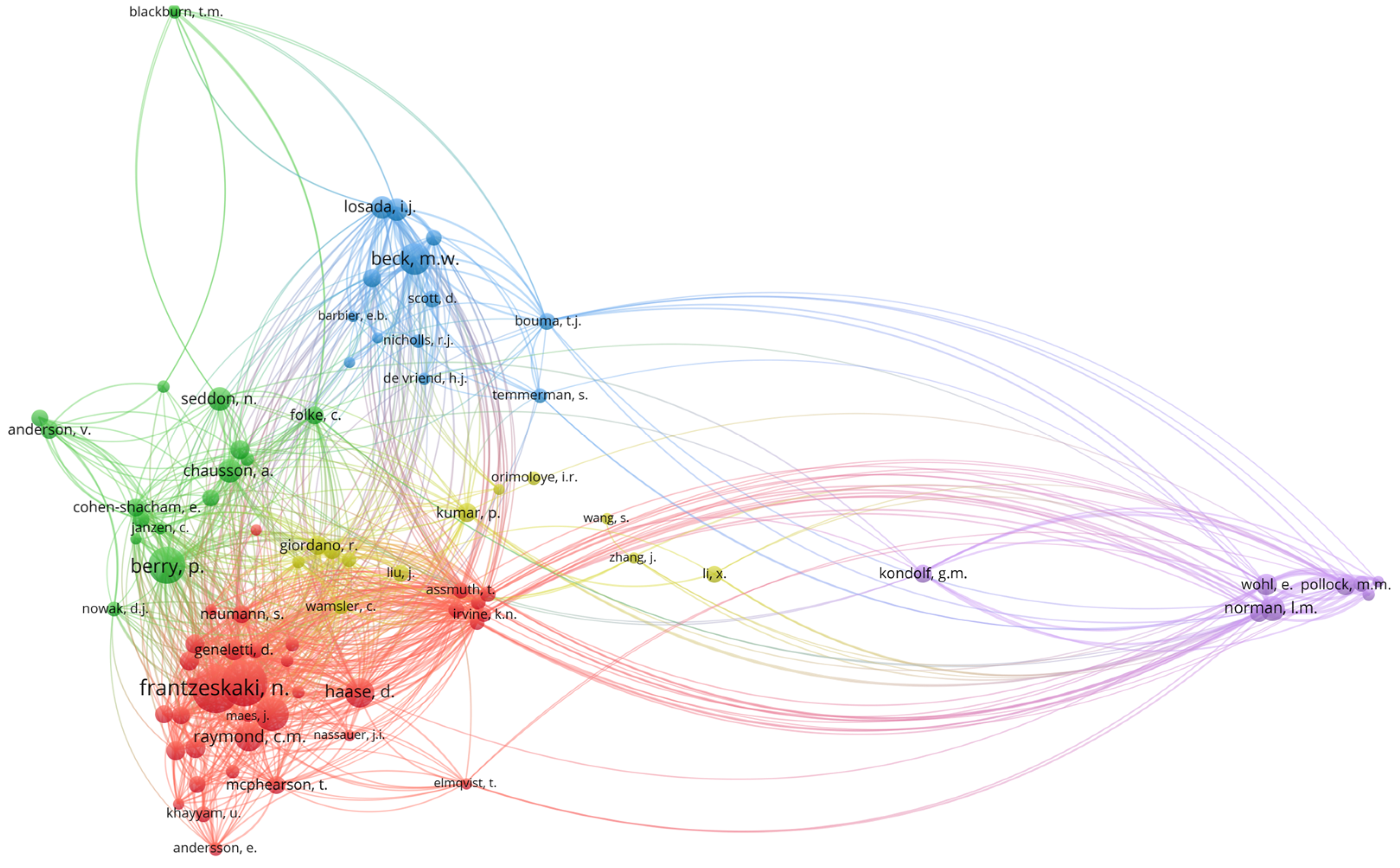
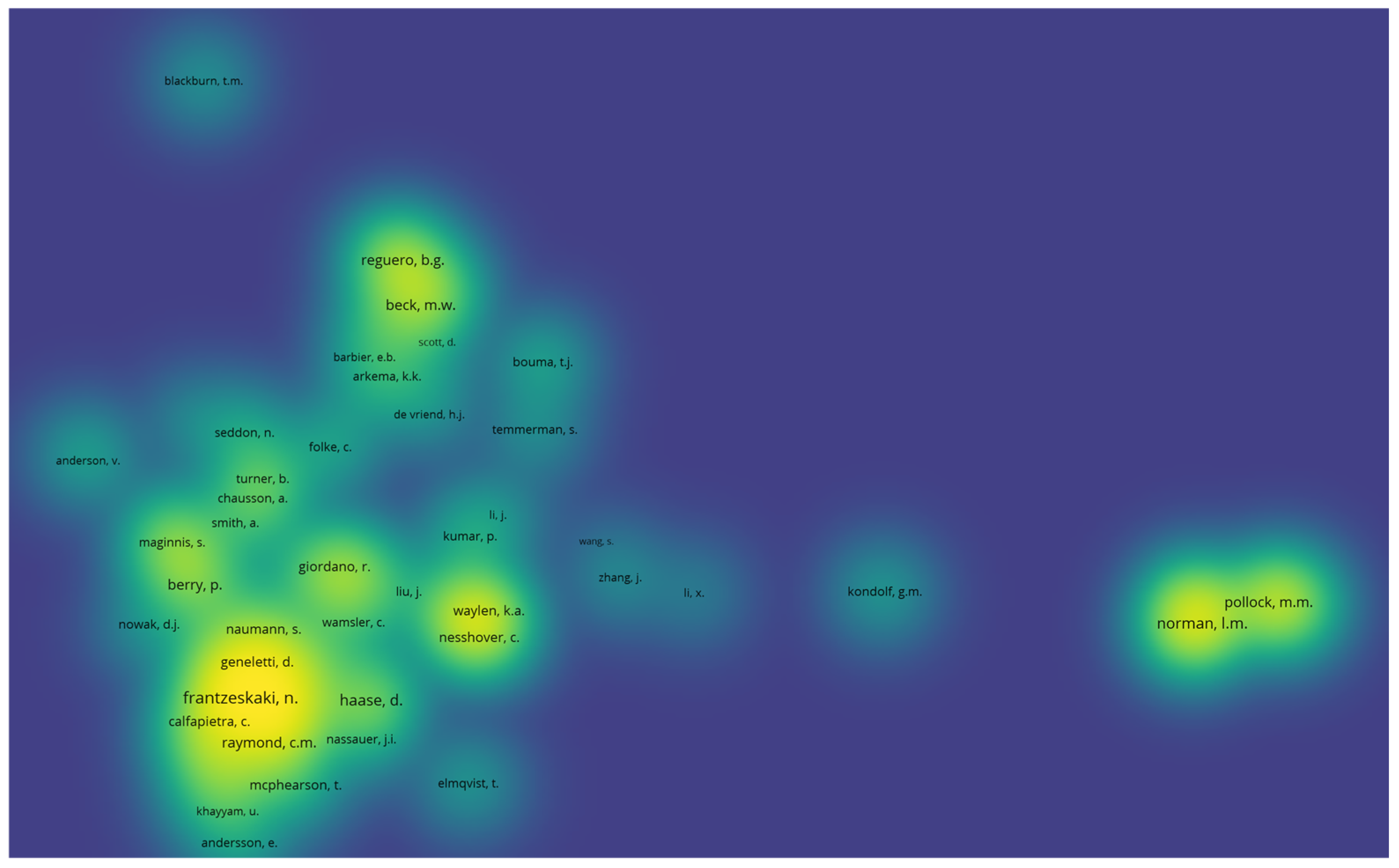

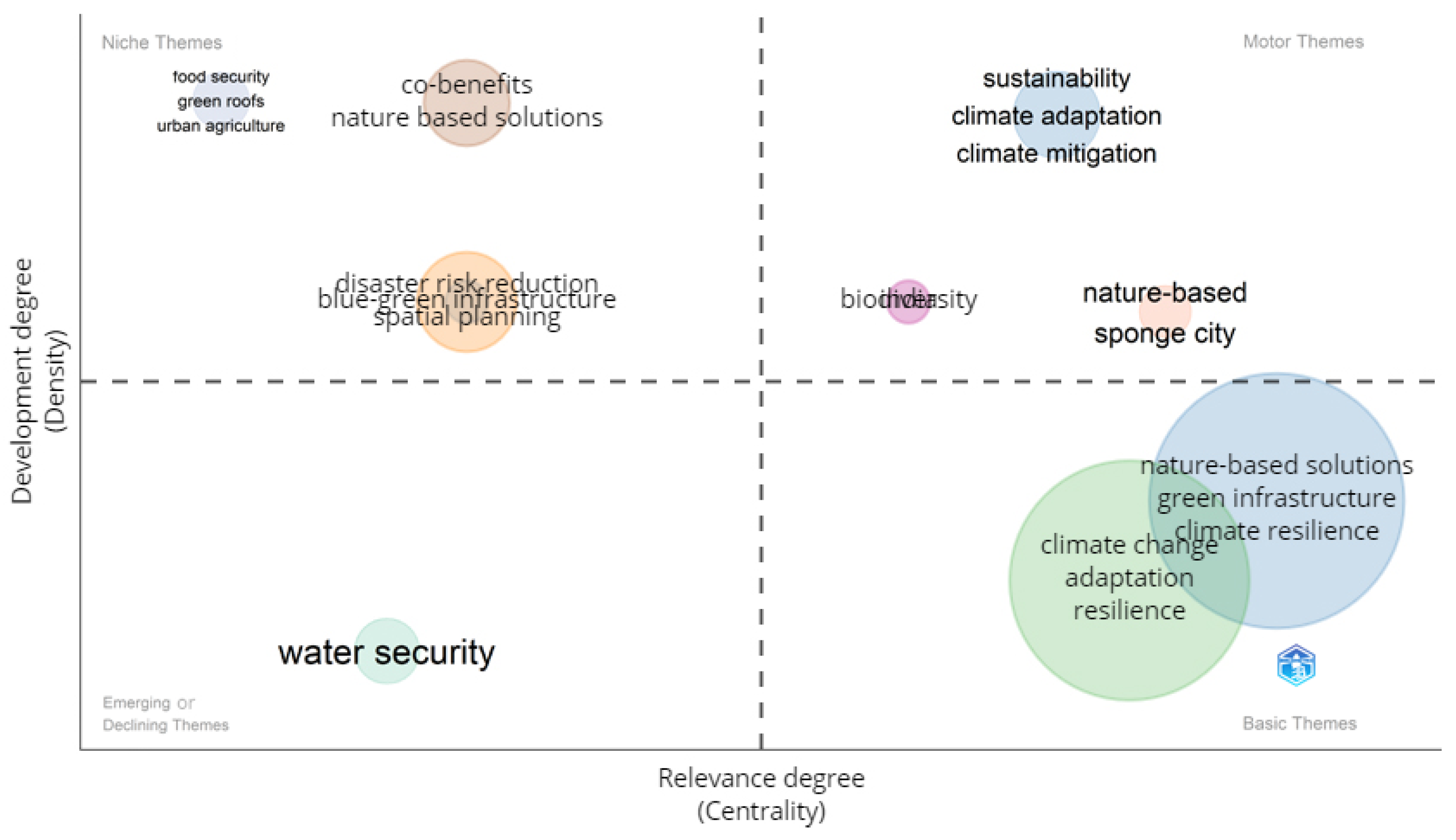
| Research Gap | Connections |
|---|---|
| Connections with outdoor recreation • designing multifunctional areas for climate resilience and recreation [27] • the role of NBSs in shaping multifunctional land use [28] • multifunctional outdoor recreation and flood management in flood-prone areas [29] |  |
| Sustainability • ways in which water management can improve sustainability [30] • using ecosystem services for greater sustainability [31] • using NBSs for economic sustainability in cities [32] | 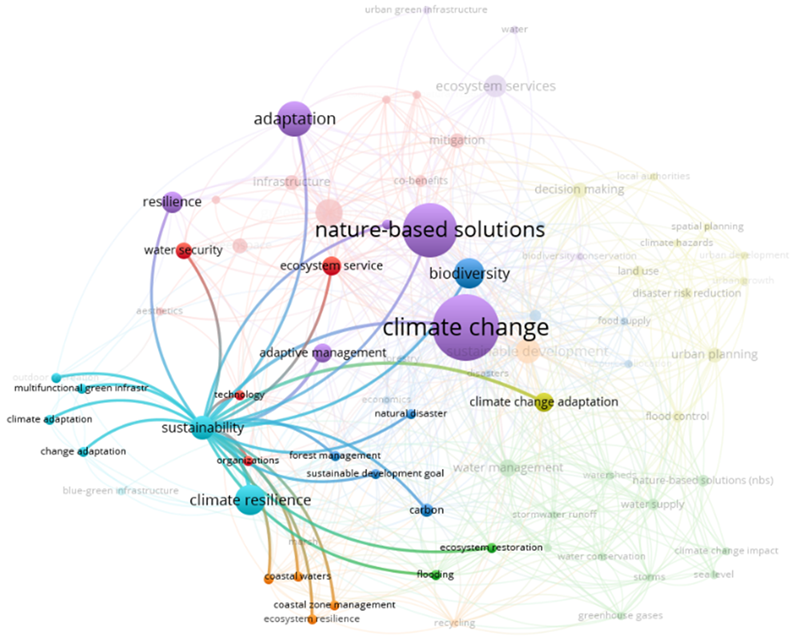 |
| Ecosystem services • using technology to expand ecosystem services [20] • using ecosystem services to support nutrient cycling food supply and resource allocation [33] • ways in which ecosystem services can contribute to sustainability [31] • using ecosystem services for cultural purposes and nature recreation [34] • using ecosystem services for wastewater management [35] • using technology to improve ecosystem services and resilience [36] • using urban and spatial planning to improve or extend the resilience of urban ecosystems (how can we improve ecosystem resilience through urban and spatial planning strategies?) [37] | 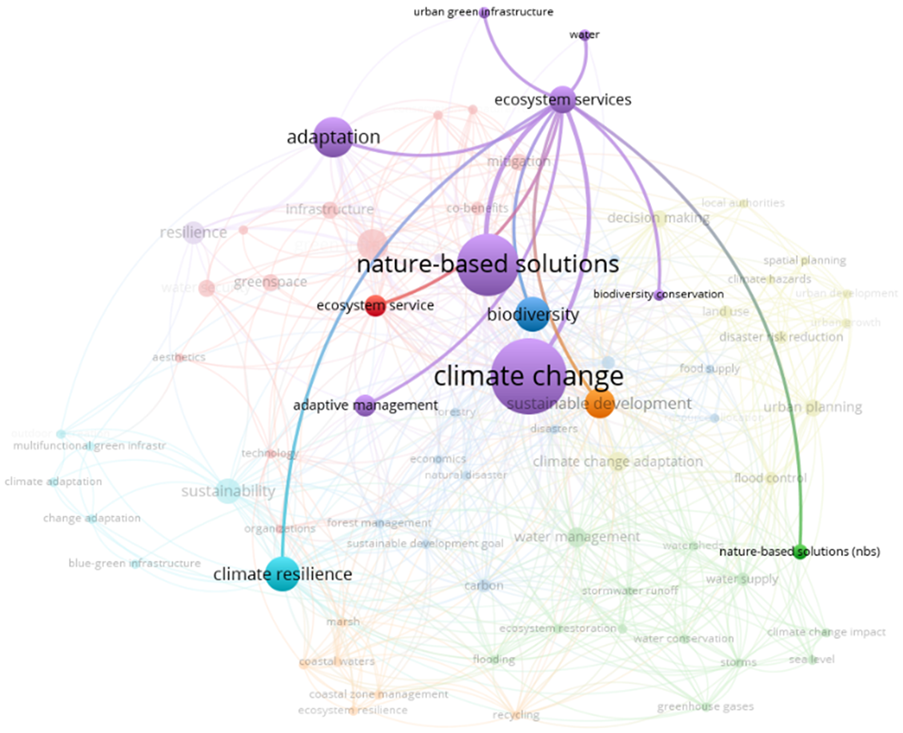 |
| Water management • improving wastewater treatment by using the functions of NBSs [38] • forecasting the quantity of refuse and developing an intelligent system within water treatment facilities to facilitate immediate anticipatory management of sewage treatment [39] • creating an intelligent microgrid for waste management [40] • leveraging the Internet of Things (IoT) for the purpose of effectively handling domestic waste [41] • using ecosystem services for wastewater treatment [42] | 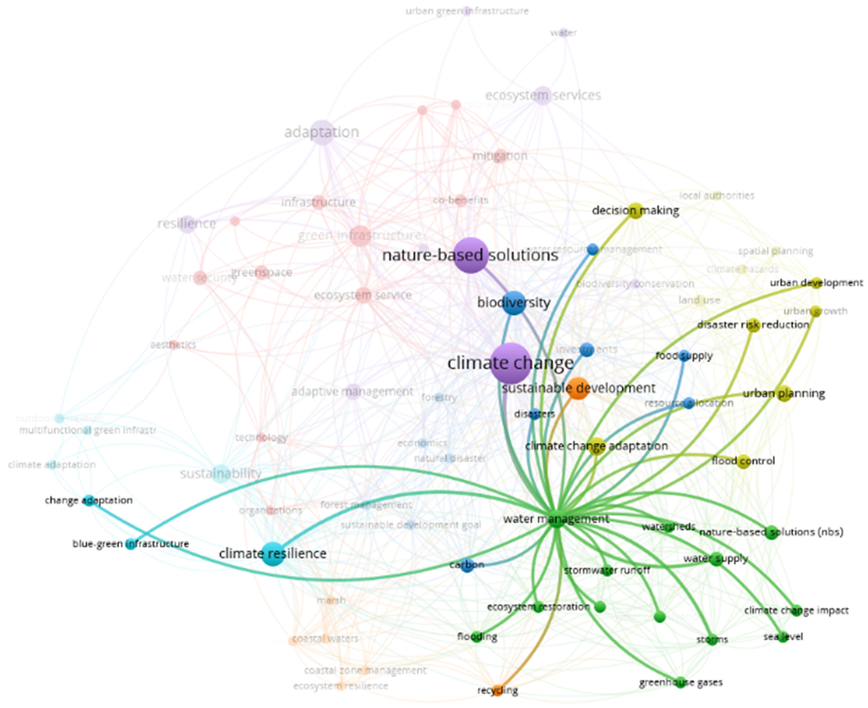 |
| Mitigate and absorb carbon dioxide • investigating crucial elements in the cultivation of algal biomass and lipids for the generation of sustainable energy sources [43] • predicting future biomass yields of crops [44] • investigating the impact of climate change on carbon flux as a major driver of algal biofuel production [45] • technology potential for carbon uptake from the air and other resources [46] • prediction of renewable energy production [47] • accurate prediction of CO2 emissions [48] |  |
| Flooding • the floating city and the use of NBSs to improve performance [49] • the role of ecosystem services in mitigating or preventing flooding [50] • sponge city with integrated NBSs and monitoring technology for wastewater management and reuse [51] • flood energy management for renewable energy generation [52] | 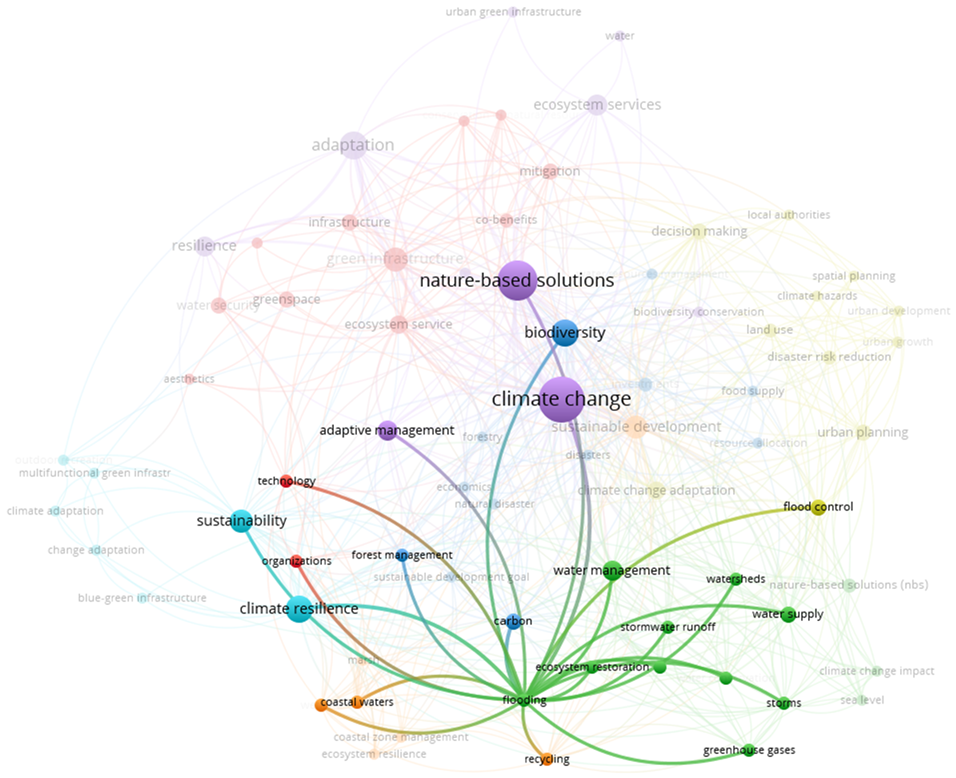 |
| Local authorities and stakeholders • rules and instructions for using NBSs to mitigate climate hazards [53] • the role of local officials and shareholders in the degree to which nature-based strategies are feasible [54] • the importance of multifunctional space and economic benefits and the impact on the extent to which NBS plans are implemented [55] | 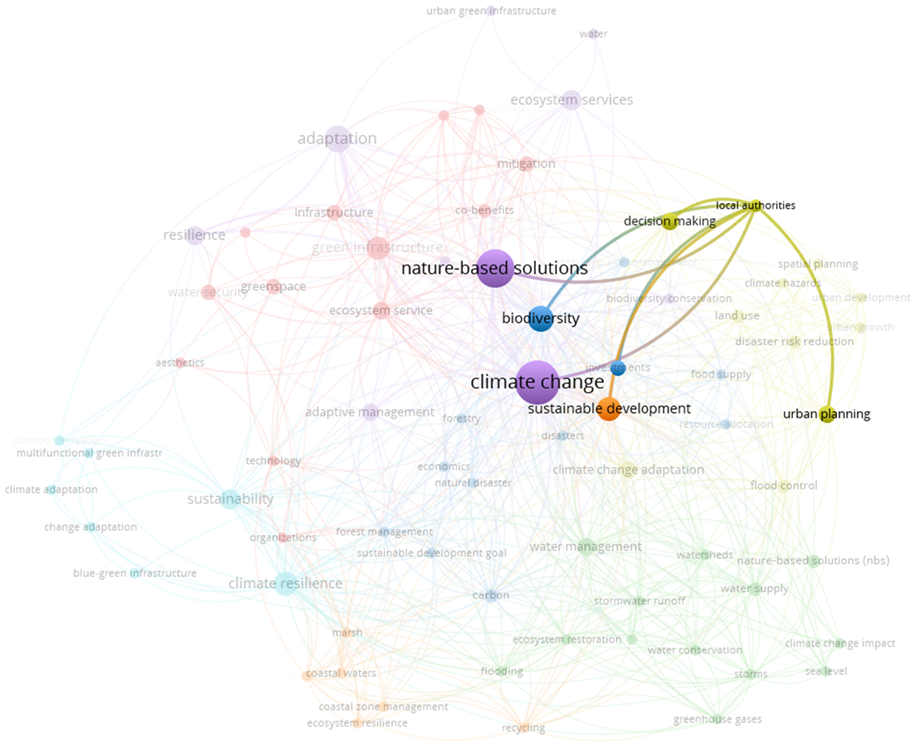 |
| Technology • the combined performance of technology and NBSs for a more advantageous conclusion [56] • the role of technology in improving the efficiency of ecosystem services [56] • use of technology in urban agriculture and improvement of biomass production [57] • use of technology for the modeling and prediction of climate hazards [58] |  |
| recycling • developing an intelligent microgrid to enhance the efficiency of waste management [40] • leveraging the Internet of Things for the purposes of household waste management [41] • bio-oil from recyclable sources and the role of NBSs in its production [59] |  |
Disclaimer/Publisher’s Note: The statements, opinions and data contained in all publications are solely those of the individual author(s) and contributor(s) and not of MDPI and/or the editor(s). MDPI and/or the editor(s) disclaim responsibility for any injury to people or property resulting from any ideas, methods, instructions or products referred to in the content. |
© 2024 by the authors. Licensee MDPI, Basel, Switzerland. This article is an open access article distributed under the terms and conditions of the Creative Commons Attribution (CC BY) license (https://creativecommons.org/licenses/by/4.0/).
Share and Cite
Vazin, F.; Chan, D.W.M.; Hanaee, T.; Sarvari, H. Nature-Based Solutions and Climate Resilience: A Bibliographic Perspective through Science Mapping Analysis. Buildings 2024, 14, 1492. https://doi.org/10.3390/buildings14061492
Vazin F, Chan DWM, Hanaee T, Sarvari H. Nature-Based Solutions and Climate Resilience: A Bibliographic Perspective through Science Mapping Analysis. Buildings. 2024; 14(6):1492. https://doi.org/10.3390/buildings14061492
Chicago/Turabian StyleVazin, Farnoosh, Daniel W. M. Chan, Toktam Hanaee, and Hadi Sarvari. 2024. "Nature-Based Solutions and Climate Resilience: A Bibliographic Perspective through Science Mapping Analysis" Buildings 14, no. 6: 1492. https://doi.org/10.3390/buildings14061492
APA StyleVazin, F., Chan, D. W. M., Hanaee, T., & Sarvari, H. (2024). Nature-Based Solutions and Climate Resilience: A Bibliographic Perspective through Science Mapping Analysis. Buildings, 14(6), 1492. https://doi.org/10.3390/buildings14061492








